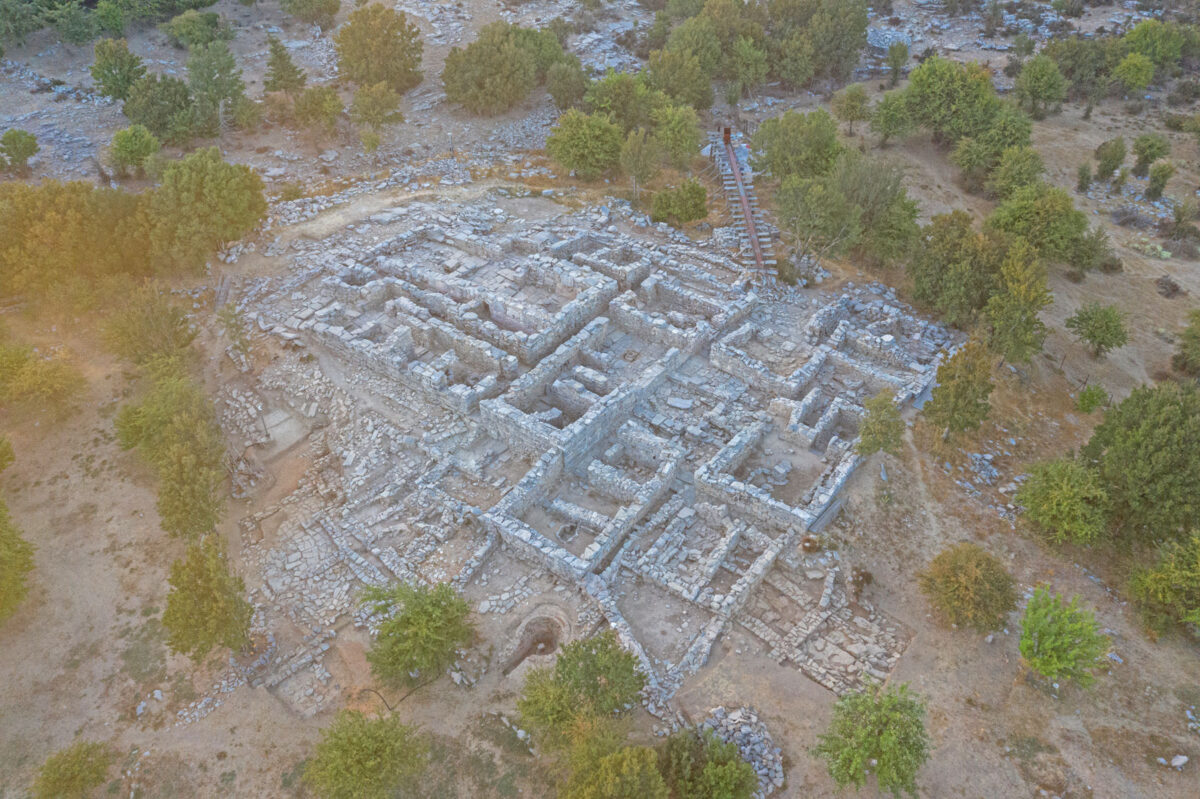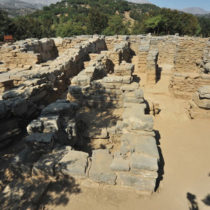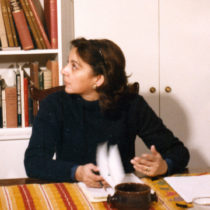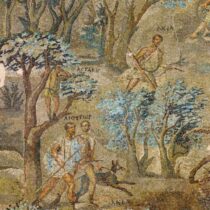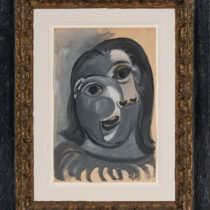“When we started researching Zominthos, we didn’t think it was a Minoan palace. Sakellarakis knew that there was something important there, perhaps a Minoan villa — but these villas were only built at a certain period, while Zominthos, as it turned out, has a history from 2000-1900 BC to at least late antiquity”. The honorary director of Antiquities, Dr. Efi Sapouna-Sakellaraki, who since 2010 has been head of one of the most impressive and demanding Greek excavations, shares some of her memories with the AMNA on the occasion of the publication of her book Zominthos. A palace on the mountain.
When in the 1980s the late Yiannis Sakellarakis found an ancient wall in Zominthos on Psiloritis, not far from the Ideon Andron he was excavating at the time , he could not imagine that it belonged to the only mountain palace of Crete. “Sakellarakis understood that this was something very important, but he only had time to dig a tiny part of it. But, a “dream” of his came true — not an imaginary one but from being able to see things, having complete knowledge of the site. He always said that “a chance finding is nothing but knowledge one is aware of”. That is, you see the site, it “speaks” to you, so you understand what it is about. That makes the good archaeologist,” she says to the AMNA.
Zominthos. A Palace on the Mountain, recently released in a limited edition sponsored by the Psychas Foundation, is a bilingual publication in Greek and English highly enlightening experts and non-experts alike, on the intricacies and magnificence of the two-story, sometimes three-story palace, which has over 75 rooms on the ground floor (a number that multiplies on each floor), as well as for its importance. We asked Efi Sapouna-Sakellaraki about the similarities and differences that found in Zominthos compared to the rest of the Minoan palaces. “It is smaller and on a mountain It is not less luxurious than the other palaces, except in having certain peculiarities, such as the central courtyard being smaller, with the northern courtyard, under which the old palaces were located, having been designed as the larger one. There is also no western courtyard — that is ,its peculiarities had been dictated by the climate. Don’t forget that it is at an altitude of more than 1,200 meters”, she tells us.
Despite illegal excavations over time and newer uses, the excavation of the amazingly preserved labyrinthine building has brought to light unique finds, corroborating its importance as a palace on the mountain, but also as the luxurious seat of important figures in Minoan life — possibly the priesthood which was associated with Knossos. Mainly, however, it proves its close and timeless relationship with the Ideon Andron, which it is adjacent to,acting as a stronghold of the sacred cave (mainly in winter when the sanctuary was not functioning). “The connection of Zominthos with Ideon Andron, where Cretan Zeus was raised and buried, is special. Knossos, which had a close association with Zominthos — the evidence we find being primarily from Knossos — exploited the wealth of Psiloritis and consequently of the sanctuary. That is, the palace was there to essentially serve the Ideon Andron which was a Mediterranean international sanctuary, especially in winter when it would be difficult to get to the cave. Although conditions have changed, even today at certain times of the year the cave is not accessible due to snow. Imagine that the first year of Sakellarakis’ excavation, in the month of August, there was 4 meters of snow inside the Ideon Andron”, says the honorary director of Antiquities to the AMNA.
Zominthos did not cease to have a cult character up to Roman times. But that was not all. It was also a political and economic center that flourished during the Minoan era (around 1600 BC), but also later in historical times (1000-800 BC), and even in the Roman period. “The Romans were the cleverest. When they settled in Crete, they took advantage of the ‘ready-made’ wealth of the region. Thousands of Roman oil lamps in Ideon Andron come from different parts of the world; from the East, the West, Africa… But we have found amazing artefacts from the East from even earlier times, between 1000 and 800 BC. On a trip Sakellarakis and I made to Iraq, when the war with Iran was still raging, we were shown objects in the National Museum of Baghdad identical to those found in Ideon Andron. That is, if the craftsman himself had not made them, they had come from the same workshop”, she points out.
During this period, Efi Sapouna-Sakellaraki is preparing the scientific publication of the research excavation. “That’s why we’re stopping the excavation for a while. The site can be visited with its configuration, a project that has been included in NSRP and is currently being implemented. It is very important to make the publication. I don’t know if it will reach five volumes, like Kythera, but it will definitely be big”, concludes Efi Sapouna-Sakellarakis, who recently received a very prestigious invitation. She has been invited by the London Mycenaean Seminar Group and the University of Cambridge to give a talk on Zominthos in May 2023 as part of the Michael Ventris Memorial Lecture, the UK’s most important biennial lecture on Aegean archaeology.
The book Zominthos, a palace on the mountain is not commercially available.
